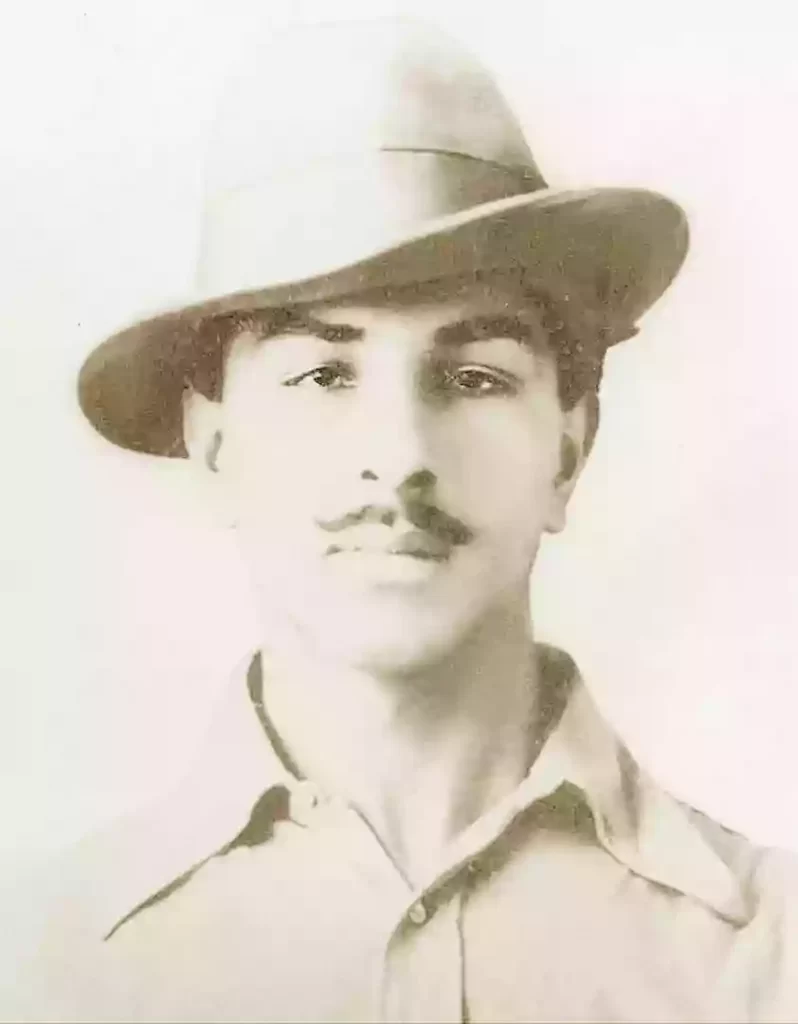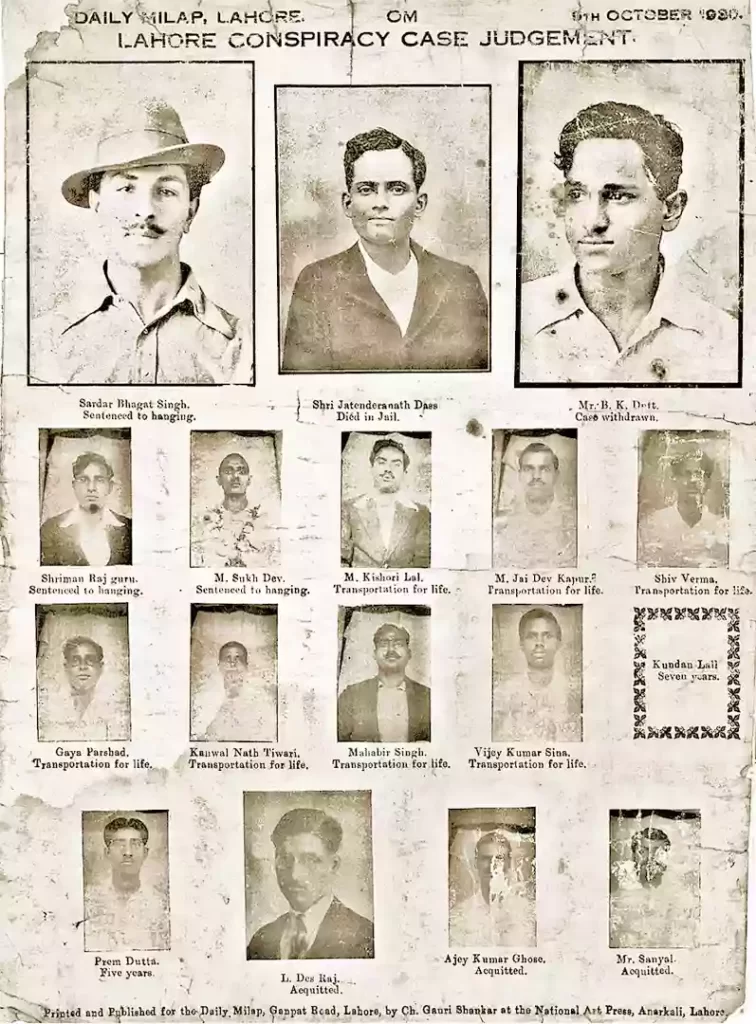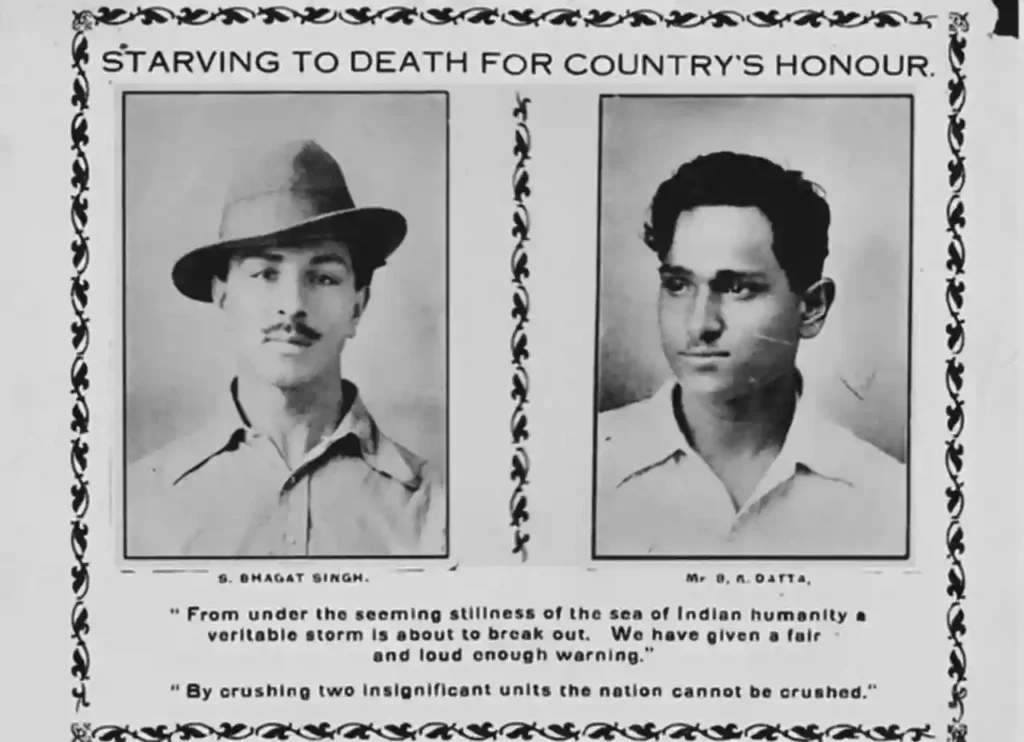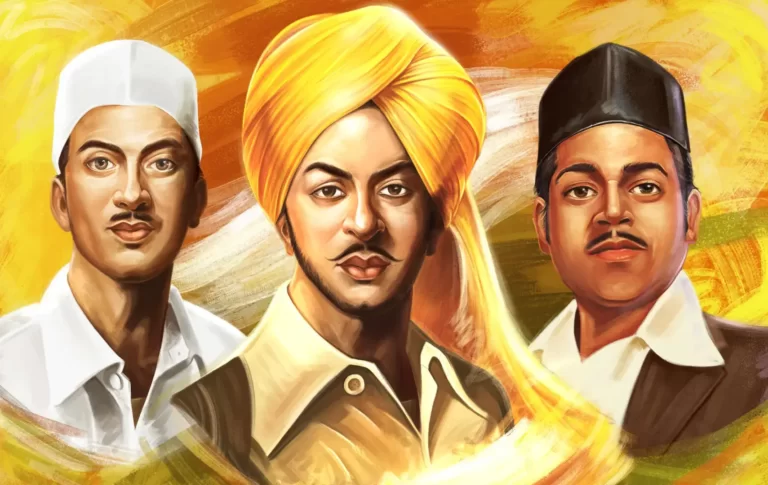Indian freedom fighter Bhagat Singh History in English
Bhagat Singh is considered one of India’s greatest revolutionaries and a hero to many. His bold and courageous acts of defiance against British rule are remembered to this day. This blog post will explore Bhagat Singh History in English, taking a look at his life, his motivations, and his legacy in India. Through this exploration, we will gain a better understanding of one of India’s most revered historical figures.

Shahid Veer Bhagat Singh was born on 28 September 1907 in Chak No. 105 GB, Jaranwala Tehsil in the Lyallpur district of the Punjab province in British India (now in Pakistan). Nickname of Bhagat Singh was Sahid-e-Azam, but he was popularly known as Shaheed Bhagat Singh. Shahid Veer Bhagat Singh was born on 28 September 1907 in Chak No. His birth name was Kishan Singh, but he was popularly known as Shaheed Bhagat Singh. Sahid-e-Azam was an Indian freedom fighter, and he is considered to be one of the most influential revolutionaries of the Indian independence movement.
As a child, Sahid-e-Azam became involved in revolutionary activities by joining the Hindustan Republican Association. Throughout his life, he participated in several attacks against British institutions, including an attempt to bomb the Central Legislative Assembly in Delhi. Singh was sentenced to death and was executed on March 23, 1931, in Lahore Jail at the age of 23. Though he didn’t live a long life, Bhagat Singh left behind a lasting legacy in the struggle for Indian independence. He is still remembered by many as a martyr and symbol of resistance to British colonialism in India. His legacy continues to inspire generations of activists around the world.

Shahid Veer Bhagat Singh’s life is an inspiration to those who have justice in their hearts and refuse to bow to oppression. This brave young man dedicated his life to the struggle for Indian independence. His history is a reminder that despite setbacks, great victories are possible. Sahid-e-Azam’s biography is full of insights into the mind of a revolutionary and is a source of encouragement for anyone today who is fighting for change. An important read for anyone interested in history, politics, or human rights activism. Loved and respected by the people of India, he continues to be remembered by those in the country. At a young age, Bhagat Singh’s life was cut short, but he left behind an indelible legacy that is remembered today by those with a passion for history or human rights activism. His Brief History of Shahid Veer Bhagat Singh is unforgettable.
This biography of Sahid-e-Azam provides valuable insight into the mind of a revolutionary leader whose passionate protest led to an impact on the Indian society during its struggle for independence from British rule. Bhagat Singh’s commitment to social justice lasted for 23 years and leaves a lasting impact on the history books of the world. It should be found on every bookshelf, right next to other well-respected biographies of other influential figures like Mahatma Gandhi and Nelson Mandela.
Shahid Veer Bhagat Singh Famous Slogan
Shahid Veer Bhagat Singh is known for his speeches and for the slogan Inquilab Zindabad, which means Long live the revolution. His life and activism spanned an important period in Indian history, from 1909 to 1931. He was executed on March 23, 1931, at age 23. Before he died, he said, you may kill me today, but I will not die. I shall live through all eternity. Shahid Veer Bhagat Singh was nicknamed ‘Mukunda Lal’ by his family, though this wasn’t really a formal name.
Shahid Veer Bhagat Singh Impact the Indian Independence Movement?
Bhagat Singh played a big role in the Indian independence movement due to his participation in various activities that led India to freedom from colonial rule. His involvement with revolutionary groups led to him being jailed for various crimes, but he continued his activism even behind bars through writing and publishing newspapers aimed at spreading nationalist sentiments among people all over India. Bhagat Singh was executed by hanging in 1940 at the age of 23, following an unsuccessful plot to kill a British police officer who ordered a lathi charge on Lala Lajpat Rai, who was protesting colonial policies at the time. This murder greatly impacted Indian society and turned Shahid Veer Bhagat Singh into a celebrated figure of India’s independence movement.
Activities that Create a Revolutionary
- In 1928, the British government created the Simon Commission to investigate the political situation in India. Many Indian political parties protested the Commission because there were no Indians in its membership, and there were protests across the country. When the commission visited Lahore on October 30, 1928, Lala Lajpat Rai led a march in protest. Violence broke out after police tried to break up the large crowd. Superintendent of Police James A. Scott ordered police to use their batons against the protesters and, himself, physically assault Rai, who died from a heart attack on November 17, 1928. Doctors believed that his death may have been hastened by the injuries he sustained. When the matter was raised in the Parliament of the United Kingdom, the British Government denied any wrongdoing in his death.
Singh was a significant figure in the Hindustan Republican Association (HRA) and was responsible, in large part, for its renaming to Hindustan Socialist Republican Association (HSRA) in 1928. The HSRA sought revenge on John Paton’s death. Singh worked with revolutionaries like Shivaram Rajguru, Sukhdev Thapar, and Chandrashekhar Azad to shoot John P. Saunders, a head of the British District Police Headquarters in Lahore on 17 December 1928. However, they shot the wrong man; it was an Assistant Superintendent of Police and not the higher-ranking member.
Shahid Veer Bhagat Singh did not become well-known because of his act of terrorism, but because he seemingly vindicated, for the moment, the honour of Lala Lajpat Rai, and through him, of the nation. He became a symbol, and the act of revenge became unknown. But, the symbol, his identity, endured and remained for everyone in the Punjab, and to a lesser extent in the rest of Northern India, to speak about his deeds and bask in his fame. Constant songs are made about him and the vast notoriety that he attained is astonishing.
- The group escaped, Chanan Singh – a Head Constable who was chasing them – was shot dead by Chandrashekhar Azad. They then fled on bicycles to pre-arranged safe houses. A group of policemen launched a search for the robbers and blocked all the entrances and exits to and from the city, the Criminal Investigation Department kept an eye on all young men leaving Lahore. For the next two days, the fugitives hid. On December 19, 1928, Sukhdev visited Durgawati Devi, also known as Durga Bhabhi, wife of another HSRA member, Bhagwati Charan Vohra, for help, which she agreed to provide. They decided to catch the Lahore-Bathinda train, en route to Calcutta, that morning.
Shahid-e-Azam Escape from Lahore
Thereafter, Shahid Veer Bhagat Singh and Rajguru both carrying loaded revolvers, left the house the next day. Dressed in western attire and carrying Devi’s sleeping child, Singh and Devi appeared as a young couple, while Rajguru carried their luggage as their servant. With great fortune, at the train station Singh was able to hide his identity and the three were able to buy tickets and board the train to Kanpur. There, they boarded another train to Lucknow since it was less likely that the CID would investigate anyone boarding the direct train from Lahore. At Lucknow, Rajguru left to visit Benares while Singh, Devi, and the infant traveled to Howrah railway station, where all except Singh departed a few days later.
The Bomb Attack in Delhi and Bhagat Singh Fansi

For some time, Shahid Veer Bhagat Singh had been using drama as a means to incite the rebellion against the British by purchasing a magic lantern to show slides that promoted revolutionaries such as Ram Prasad Bismil who had died as a result of the Kakori conspiracy. In 1929, he proposed a dramatic act to the HSRA to attain more publicity for their objectives. Inspired by Auguste Vaillant, a French anarchist who had bombed the Chamber of Deputies in Paris, Singh’s plan was to explode a bomb inside the Central Legislative Assembly. The intended action was to protest against the rejected Public Safety Bill and the Trade Dispute Act, which had been pushed through Parliament and enacted by the Viceroy even though he has no special power. The actual intention was for the perpetrators to allow themselves to be arrested so that they could make use of court appearances as a way to draw attention to their cause.
Initially, the HSRA leadership opposed Bhagat’s participation in the bombing because they were certain that his involvement in the Saunders shooting meant that his arrest would end in his execution. But they eventually agreed that he was their best option. On 8 April 1929, Singh and Batukeshwar Dutt threw two bombs into the Assembly chamber while it was in session. They were built not to kill, but some members, including George Ernest Schuster, the finance member of the Viceroy’s Executive Council, were injured. Smoke from the bombs filled the Assembly so that Singh and Dutt could have escaped in the confusion had they wished. Instead, they stayed shouting the slogan, Inquilab Zindabad! and threw leaflets. Eventually, the two men were arrested and proceeded to change jails throughout Delhi.
Shahid Veer Bhagat Singh Thoughts
Though he was not born in the 20th century, this Indian patriot surely is a hero for the country. Though his ideologies are not widely acknowledged, Shaheed bhagat Singh thoughts have influenced the lives and selfless service of many Indians, who try to live by his words today. When he died in 1931 at just 23 years old, after being condemned to death by the British Government and hanged on March 23rd as an act of terrorism against them, many people were left heartbroken and knew that Bhagat Singh had not accomplished everything he had wanted to. With only nine months of imprisonment leading up to his execution date, Shahid Veer Bhagat Singh fought for Indian independence with as much fervor as he could manage given that circumstances.
Shahid Veer Bhagat Singh Fansi
The common man doesn’t know about the unwavering, Shahid Veer Bhagat Singh fansi spirit in his heart that led him to sacrifice his life for our freedom. On a fateful day on 29th April 1931 at 5:33 pm, before he was hanged to death and attained martyrdom, Shahid-e-Azam left behind with us his ideals to never bow down and being alert always. And so as not to forget him we call each other Sahid-e-Azam Fansi.
What You Didn’t Know About the Popularity of Shaheed Bhagat Singh?
According to Subhas Chandra Bose, Shahid Veer Bhagat Singh had become the symbol of the new awakening among the youths. Nehru stated that Bhagat Singh’s prowess was leading to a new national awakening. He was a clean fighter who faced his enemy in the open field, he said. He was like a spark that became a flame in a short time and spread from one end of the country to the other, dispelling the prevailing darkness everywhere. A number of years after his hanging, the Director of the Intelligence Bureau, Sir Horace Williamson, remarked, His photo was for sale in every city and town. And for a time, it even surpassed that of Gandhi himself in popularity.
Next Article: Gautam Buddha Story in English (500 B.C.E and 400 B.C.E)
